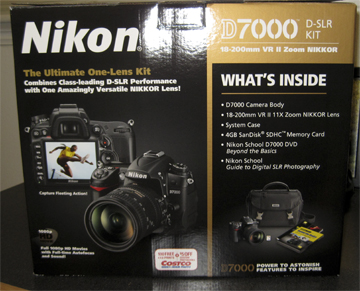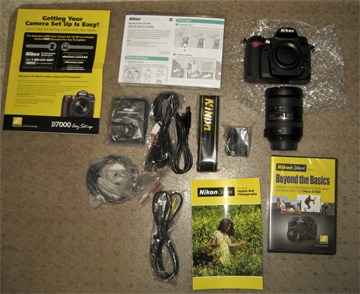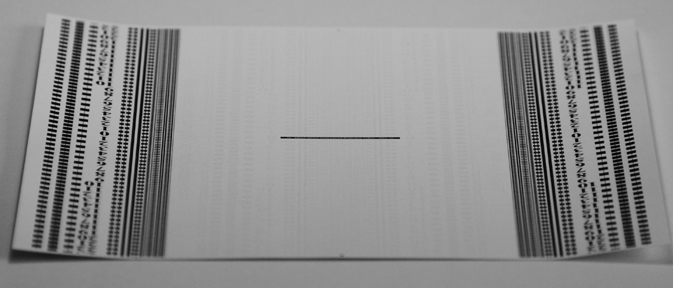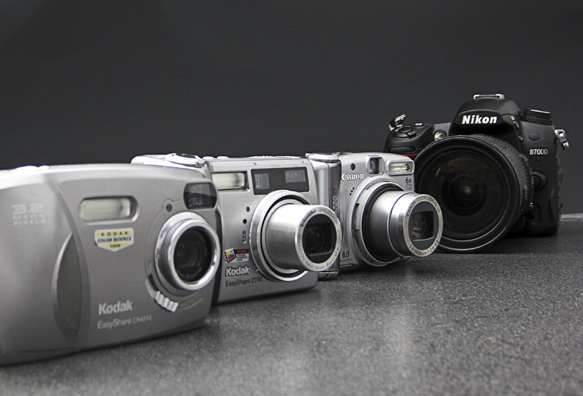Every Blog needs a beginning and so I've chosen to start this one at the beginning of my digital photography experience. To learn a little bit more about me please see my About Me page.
It was early fall 2003, I had just finished making it through radiation treatment for Thyroid cancer and we had welcomed our second child into our family when I realized that life was too precious and short to be so cavalier in my photo habits, which basically was that of the occasional snapshot with a cheap auto 35mm film camera, that fact along with the expense of buying and developing film and paying extra for a picture CD when I already had a computer and Photoshop, it became painfully clear that I needed to upgrade into the modern age.
Enter my first digital camera, a piece of junk so bad that I returned it the next day and can't even remember what it was called or who made it. I should interject here the fact that we are a less then wealthy family and having just had a baby and cancer, funds were to say the least... tight. It was nearing the Christmas shopping season and I was in Walmart and stumbled upon a deal I couldn't resist - brace yourself - a 3.2 megapixel Kodak for ~$100! I took the plunge and I'm proud to say with that humble beginning I've never looked back.
Well here's my Digital Camera heritage shot:
Here's a brief breakdown from left to right:
Optical Sensor Resolution: 3.2 MP
Maximum Aperture Range:fixed F/3.5
LCD Screen Resolution: 48,000 pixels
Pretty hot stuff right? Well after about a year and a half I upgraded now knowing what I needed in a camera ie: everything this camera didn't have, however funds were still limited so enter camera #2
Lens- 5.5–21.8 mm (35 mm equivalent: 33–132 mm)
Aperture- f/2.8–5.6 (wide); f/4.8–9.5 (tele)
Shutter speed- automatic: 1/8–1/2000 sec.; manual: 64–1/1000 sec
LCD- 2.2 in. (5.6 cm) TFT, 153K pixel resolution
This camera is the one that really opened up possibilities to me. I used it for everything, snapshots, portraits (poorly), video, and even in some astrophotography. With its manual controls I could take star trail shots, and even some Afocal pictures of the Moon, Jupiter, and Saturn through my telescope. This camera was worked to death and after almost three years the lens started to have some trouble opening so I started to look for another camera, still limited on funds and now knowing that manual controls were absolutely necessary, and wanting something with a decent long shutter speed for my astrophotography I found that cost and my requirements were starting to diverge more than I would have liked.
Enter a chance visit to Sears, now I don't usually go there but I saw an ad in a Sunday newspaper in 2007 that Sears was having a camera sale and the next day I decided to just go and check it out, I had a list of 3 or 4 cameras I was interested in. It just so happened that they had on sale that day one of those cameras, this one was the most expensive one I had on my list but was on sale for a very affordable $130! Enter my workhorse for the last three and a half years.
The Canon Powershot A720IS
Lens Focal Length: 5.8-34.8mm (35mm film equivalent: 35-210mm)
Exposure range of 1/2000 - 15 sec
And as I found out later that night the ability to run a firmware hack called CHDK which I found as I searched online for any information on a way to increase that maximum exposure from 15 sec to 30 sec for my astrophotography. While learning about CHDK I was exposed to the fact that CHDK expanded the cameras abilities not only in exposure range but gave me full manual override of every aspect of the camera, including but not limited to the ability to run scripts that would enable such features as RAW capture,an Intervalometer, motion detection - including the ability to catch lightning! And most profoundly bracketing controls for HDR, which led me to flickr, exposure to stunning imagery, forums, groups, friendships, photowalks, etc, and the rest as they say is history.
I've been an unapologetic photo junkee ever since! And after absorbing so much information from reading video tutorials, podcasts, and lots and lots of books, the means (3 years of waiting) and opportunity (a Costco sale) to aquire a "real" camera arrived. On March 18, 2011 the general fund manager of our home (aka: my lovely wife) said "Honey go get that camera."
More on all that in the next post.
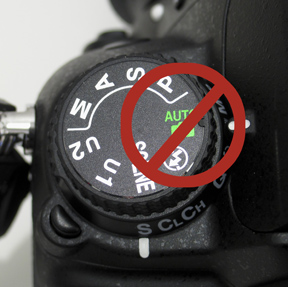 See that picture to the right? That's the last and only time I've had my camera in Auto and only because it came that way.
See that picture to the right? That's the last and only time I've had my camera in Auto and only because it came that way.
